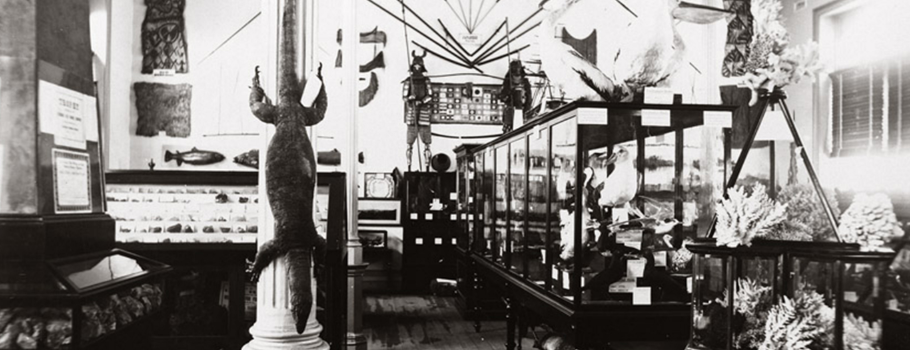Our story
The Queen Victoria Museum and Art Gallery (QVMAG) is the cultural hub of Launceston and the leading destination for art, history and natural sciences in Northern Tasmania.
The Queen Victoria Museum and Art Gallery stands on the ancestral lands of the Stoney Creek nation, comprising the Tyerrenotepanner, Leterremairrener and Panninher clans. We acknowledge and pay respect to the Tasmanian Aboriginal people as the traditional custodians of the land on which QVMAG now stands and waters it adjoins.
Our collection has been in the making since 1842, and includes significant acquisitions and donations from across the world. History, Natural Sciences and Visual Arts and Design are our key collection areas, cared for and exhibited for the community of Northern Tasmania.
QVMAG has two locations:
We are continually working with the community and peers to build and better understand this extensive and diverse collection as well undertaking new research into both existing and new collections and research areas.
QVMAG is owned and operated by the City of Launceston with ongoing support from the Tasmanian Government and is open 363 days each year, offering a fun-filled, educational and intriguing day out.
We look forward to your visit.
Our history

The beginnings of what is now the Queen Victoria Museum and Art Gallery come from collections of the Royal Society of Tasmania and the Launceston Mechanics Institute, founded in 1842.
The Museum itself, originally named the Victoria Museum and Art Gallery, was officially opened in 1891 at Royal Park.
The project had been many years in the planning and was originally intended to be an exhibition. The State Government advised that it would prefer to fund a museum.
The Museum building was designed by a young architect by the name of John Duncan, whose design was chosen as part of a competition.
Originally the Museum had a caretaker but no curator. The first curator was Herbert Hedley Scott, who began the role in 1897. Scott quickly built an excellent reputation with his research and curatorship gaining international attention.
To avoid confusion with the Victorian State Museums, the Launceston City Council agreed to the amended title of 'Queen Victoria Museum and Art Gallery.'
The early collections focused on mineral specimens and natural sciences on the ground floor of the museum, with art displayed on its upper level. More space was needed, so in 1907 the first extension was built to house a zoological gallery.
In 1927 the museum gained a significant additional collection, with the purchase of the John Watt Beattie collection, a treasure trove of early colonial history and art, including an extensive convict-related collection.
Scott's successor was his son Eric who was also a well-regarded scientist, and also further developed the Historical displays. In the years following, more extensions were built and the collections and research continued to develop.
In 1998, the Museum began the development of a new site at the Launceston railway yards in Inveresk which opened in 2001. Six years later, the decision was made to create a dedicated Art Gallery at the original Royal Park site with the Inveresk site concentrating on Natural Sciences and History. The flagship 'Tasmanian Connections' exhibition opened in 2010, and in 2011 the refurbished Art Gallery finally opened as a space dedicated to Visual Arts and Design.